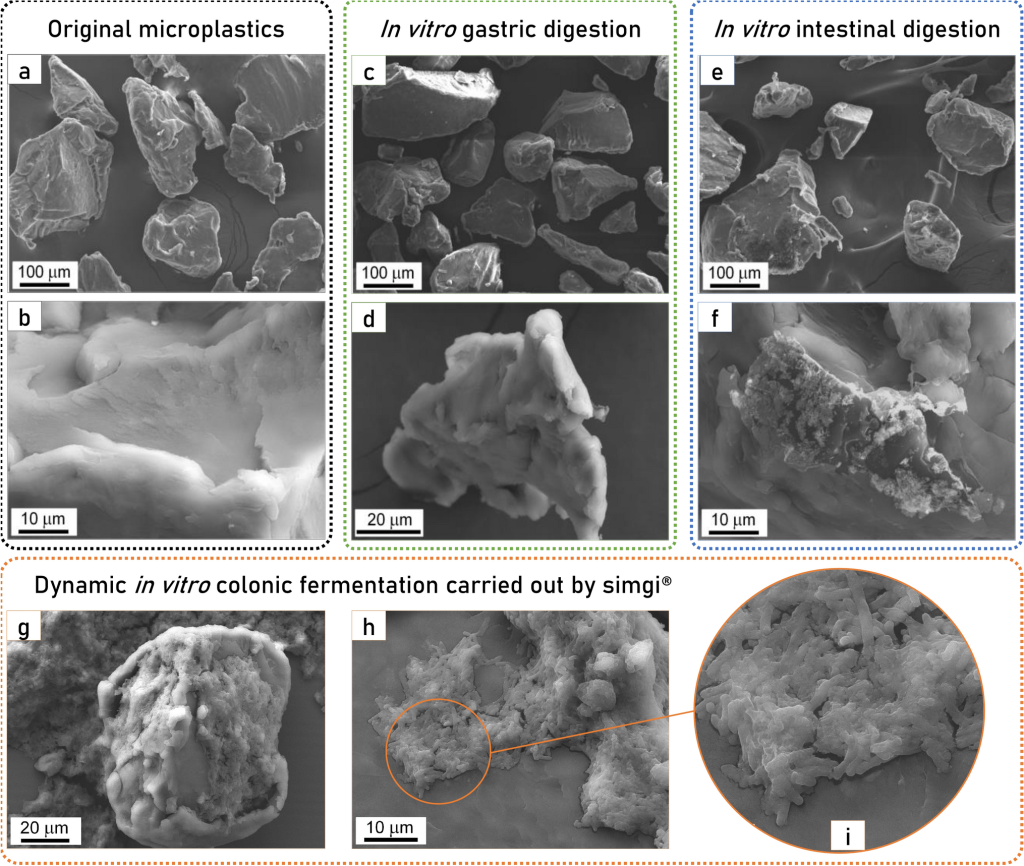Since the microplastics are very small and can enter to our food chain, it could also end up inside our body. The recent article by Tamarge et al. (2022) noted that “the risk assessment of microplastics’ intake is still a global challenge for the scientific community”. Their research focused on the effect of microplastics in the gastrointestinal tract. They used PET (polyethylene terephthalate) to explore the interaction between gastrointestinal tract and PET because PET was also found in human faeces. They simulated the gastrointestinal tract in one of the dynamic simulators which is the simgi® system. It is a computer-controlled gastrointestinal in vitro model designed to reproduce the colonic microbiota (microorganisms community found in colon) responsible for metabolic bioconversions in the large intestine. This system has been employed in many research to study the effect of different foods and the result is closer to the physiological reality of the gastrointestinal tract. They also used 166 mg/intake of PET MPs (Microplastic) that is corresponding to the estimated daily intake in humans.
They revealed that the exposure of the human colonic microbiota to PET MPs affected the presence of microbial communities. They found that the microbial groups essential for the correct balance of the gut/colonic microbiota (different kinds of the microorganisms which coexist as symbiosis by balancing the amount of them in the colon for human health) were reduced and created the chance in the increase of different pro-inflammatory and disease-related bacterial groups that could alter the intestinal homeostasis. They also feel concerned if the additives are existed within the PET MPs and there might also be unexcepted effect on gut microbiota. If PET MPs coming from the environment could also act as vectors for possible pathogens or contaminants then it could directly or indirectly affect gut microbiota and be related with gut dysbiosis. Further research is recommended to understand the effect of MPs intake on the human gut microbiome homeostasis so that the risk of MPs ingestion through diet on human health could be further assessed. It is also interesting to know the kind of chemical released into our body when MP meets with the acid of stomach. Let’s explore more and stay tuned.
Reference:
Tamargo, A., Molinero, N., Reinosa, J.J. et al. PET microplastics affect human gut microbiota communities during simulated gastrointestinal digestion, first evidence of plausible polymer biodegradation during human digestion. Sci Rep 12, 528 (2022). https://doi.org/10.1038/s41598-021-04489-w
By: Moe Thazin Shwe, SOLEN Research Associate – IPC panel member
Edited by: Hendra WINASTU, SOLEN Principal Associate – IPC panel coordinator
Date: 8 January 2023
Article#: SOLEN-IPC-0007
The Former Article: https://solenvn.com/en/biodegradable-plastics/
The Latter Article: https://solenvn.com/en/plastics-are-everywhere/



 Tiếng Việt
Tiếng Việt 日本語
日本語
Pingback: Plastics are everywhere - Solen
Pingback: Biodegradable Plastics - Solen
This is very interesting, You’re a very skilled blogger. I have joined your feed and look forward to seeking more of your fantastic post. Also, I have shared your web site in my social networks!
nice content thanks